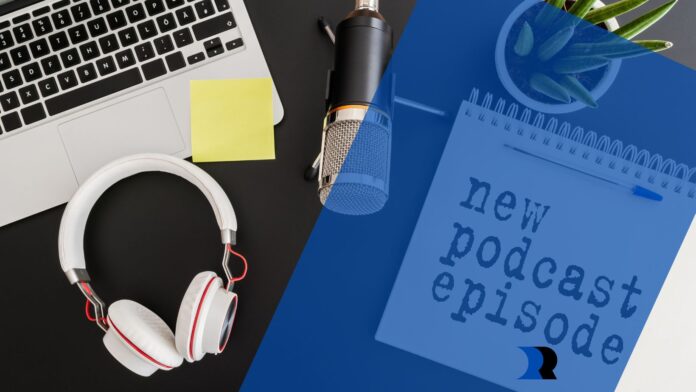The purpose of this how-to guide is to show a clear, step-by-step way to produce an automated podcast from scratch using a modern podcast generator. You will learn a professional workflow that covers ideation, scripting, voice choice, editing, distribution, and analytics.
An AI podcast generator combines research, script drafting, voice synthesis, and audio assembly into one cohesive process. Tools like Monica AI and Wondercraft streamline production end-to-end, cutting manual tasks and saving time for creators.
Key benefits include consistent quality, predictable output, and scalable processes that help creators reach their audience more efficiently. This guide previews features such as script generation, voice selection, editing tools, distribution steps, and listener analytics to improve the experience.
Voice synthesis and natural speech processing now produce natural, human-like audio, making these tools viable for newcomers and experienced podcasters. Plan goals before production to align content with measurable results and pick the right tool for your budget and timeline.
Why AI podcasting now: the state of automated podcast creation in the United States
With millions of episodes across major platforms, U.S. shows face intense competition. Creators need faster workflows so they can focus on strong content rather than repetitive tasks.
Modern technology compresses the old production chain—recording, transcription, editing, and publishing—into a smoother process. Automated transcription, topic segmentation, and audio polish save significant time and reduce errors.
These tools boost accessibility. Small teams and new content creators no longer need deep audio engineering skills to publish professional episodes. That opens the field to more voices and ideas.
For U.S.-based creators, the benefits are clear: faster turnarounds, repeatable methods, and consistent quality that helps shows stand out. Teams gain operational reliability and predictable schedules.
Technology works best when paired with editorial judgment. Creators can use automation to handle routine steps and keep human oversight for tone and authenticity.
The next sections translate these trends into practical guidance on choosing tools, designing a streamlined process, and maintaining high content standards.
From manual to automated: how podcast creation technology evolved
Recording, transcription, and editing once took days; today, software compresses that timeline to hours.
The shift is powered by machine learning and smart tooling. Platforms such as Monica AI and Wondercraft streamlined scripting and voice synthesis to produce human-like narration. NotebookLM turns written notes into natural-sounding audio conversations, widening content repurposing options.
The shift powered by machine learning
Early production required studio time and hand transcription. Modern technology automates those steps and improves predictability.
Manual vs. automated workflows
Manual workflows cost more and vary in quality. Automated flows cut time and reduce per-episode cost while keeping output consistent across multiple podcasts.
Transcription, editing, and publishing made accessible
Automated transcription trims errors and speeds up editing. Combined with content organization, publishing becomes a simpler process for creators of all sizes.
Evaluate a tool based on team size, workflow needs, and output goals to match your process and scale efficiently.
Key benefits you can expect from an AI podcast generator
Smart tooling compresses production time by automating scripting support, voice synthesis, transcription, and content organization. That reduces repetitive tasks and shortens the path from idea to publishable audio.
Dramatic time and cost savings across the creation process
Automated scripting aids and organized workflows cut research and drafting time. Built-in editing cues and noise handling shrink manual editing needs.
Fewer external vendors and faster cycles lower per-episode costs, so small teams can scale output without a big budget increase.
Consistent, high-quality audio output and improved accessibility
Repeatable quality comes from templates and voice profiles that hold tone steady across episodes. That consistency improves the listener experience and builds trust with your audience.
Intuitive interfaces and guided templates increase accessibility. Creators without audio engineering skills can still produce professional content and reach more listeners.
To choose the right tool, rank priorities—speed, quality, budget—and map them to features like automated editing, transcription accuracy, and template libraries. This practical approach helps you pick a solution that improves efficiency and audience retention.
Skywork ai podcast generator — step-by-step to your first automated podcast
A reliable setup turns one-off ideas into repeatable episodes that save time and keep quality high.
Set up your workspace. Choose a plan, connect integrations, and define your audience. Configure project templates and naming conventions so teams can iterate without confusion.
Set up your workspace: choosing plans, connecting tools, and defining your audience
Pick a plan that matches your output goals. Link your hosting, analytics, and collaboration tools so uploads and tracking happen automatically.
Research-to-script in one flow: outlines, sources, and AI-optimized scripts
Import outlines and attach sources with verifiable citations. Use the notes-to-script flow to produce tight, audio-ready scripts that reflect your content goals.
Selecting voices, accents, and adding sound design for listener engagement
Choose voice profiles and accents that match your tone. Layer music beds and subtle SFX to boost engagement without drowning the narration.
Editing, exporting, and preparing episodes for platforms and distribution
Do a light edit, run final checks, and export to platform-ready formats. Templates can output slides, markdown, or hosting metadata to streamline publishing.
Super agents accelerate the process. skywork super agents and specialized super agents handle research, hooks, and multi‑speaker structure from one source base. That reduces manual formatting and keeps content consistent across episodes and other deliverables.
Advanced creation techniques to produce high-quality audio content
Creating high-quality audio content depends on precise scripting, thoughtful sound choices, and efficient repurposing.
Writing scripts optimized for narration
Write short sentences and clear transitions. Keep language conversational and use keywords naturally so pacing stays smooth.
Mark emphasis, pauses, and breath points in the script. That helps voices read with intent and keeps listeners engaged.
Adding human elements
Layer subtle music beds and light SFX to set mood without masking speech. Use intentional pauses and variable pacing to add warmth.
Test mixes at multiple volumes so dialog remains clear on phones and earbuds.
Multi-format production with skywork super agents
Super agents turn one research base into docs, slides, sites, and more with source attribution. That expands reach and reinforces episode themes.
Use segment markers and cue sheets to align edits, music, and chapter breaks. Collect listener feedback, iterate on scripts, and refine methods to boost engagement and retention over time.
Toolbox comparison: Google’s AI podcast generator, Descript, Monica AI, and Wondercraft
A quick comparison helps you pick the best toolset for interviews, narrative series, or short explainers.
Google’s strengths
Google’s platform integrates tightly with search and cloud services and shines in accurate speech-to-text. It adds automatic topic segmentation and keyword extraction to speed SEO-ready transcript creation.
Built-in audio optimization reduces noise and balances levels for clear output. That makes it a strong fit when transcription accuracy and discoverability matter most.
Descript’s workflow advantages
Descript eases scripting and post-production with an AI writing helper and customizable templates. Its speech-to-text editor and integrations cut the time spent moving files between apps.
Choose Descript when you need fast editing, collaborative text-based audio work, and tight iteration cycles.
Monica AI and Wondercraft: voice quality
Monica AI and Wondercraft lead in natural-sounding voice synthesis. Their expressive delivery elevates narrative content and branded series that rely on emotional nuance.
They fit creators focused on listener experience and voice realism more than raw transcription features.
How to pick: run short pilots with two tools to compare quality, export formats, automation depth, and team adoption speed. Match features to episode type, budget, and time constraints, and prioritize collaboration and export options when scaling production.
Distribution, SEO, and growth: getting your episodes in front of listeners
To grow your audience, treat each episode like a small content campaign with searchable assets. Focus on metadata, consistent publication, and feedback loops so the creation process feeds discovery and improvement.
Metadata that ranks: titles, descriptions, tags, and transcripts
Write concise, keyword-led titles that match search intent. Use descriptions to expand topics and include time-stamped highlights to boost click-throughs.
Leverage transcripts and topic extraction from advanced transcription tools to pull target phrases for tags and show notes. Transcripts improve accessibility and make episodes more discoverable on platforms and search engines.
Publishing across platforms: workflow to Spotify, Apple Podcasts, and more
Create a simple export checklist: final edit, cover art, metadata, transcript, and hosting-ready file. Use one feed or a multi-upload workflow to keep tags and artwork consistent across platforms.
Automate uploads where possible so the same metadata and episode structure appear across directories. That reduces errors and strengthens brand experience for listeners.
Analytics, audience insights, and continuous improvement loops
Track completion rates, drop-off points, and listener sources. Use these metrics to tweak episode length, scripts, and segment order.
Collect reviews and listener feedback, document changes, and apply the learnings to future episodes. Small improvements in audio polish, clarity, and metadata compound into steady audience growth.
Efficiency, scaling, and ROI with super agents and integrated workflows
Achieving measurable ROI on audio creation depends on reducing time-to-publish and avoiding repeated manual tasks.

Teams that adopt automation see faster cycles, fewer external vendors, and clearer cost models for each episode.
Cost-benefit analysis: automation vs. traditional production
Automation cuts time and cost. Replace long vendor chains with an internal process that handles research, scripts, and basic edits. That reduces per-episode spend and shortens delivery from days to hours.
Compare labor hours, software fees, and hosting costs to estimate break-even points. Factor in higher output and the value of consistent content across platforms.
Scaling teams, version control, and enterprise-grade deliverables
skywork super agents and specialized super agents centralize research, source attribution, and multi-format output. They produce repeatable scripts, slides, and docs while preserving verified sources for regulated industries.
Use role-based workflows and version control to prevent lost edits and ensure narrative intent. Define production cadences, assign agent responsibilities, and track KPIs like time-to-publish and completion rates.
Integrated workflows reduce tool-switching and improve efficiency without sacrificing quality. Standardized templates, clear checks, and measurable metrics turn creation into a predictable process with demonstrable ROI.
Move from idea to impactful audio: your next steps with Skywork
Take one topic and convert it into audio and companion assets with repeatable, verifiable steps.
Start by defining your show purpose, set up a workspace, import notes, and generate scripts with citations. Finalize episode flow and run a quick quality review before export.
Use skywork super agents to turn research into audio-ready segments and multi-format output. This reduces tool sprawl and keeps source trails intact for reliable results.
Pilot two to three episodes, measure listen-through rates and subscriber growth, then iterate on scripts and structure. For final delivery, check transcripts, polish metadata, and publish consistently to boost accessibility and engagement.
Compare a podcast generator stack and pick the platform that fits your team. Activate super agents to speed creation and scale your audio content with less friction.


